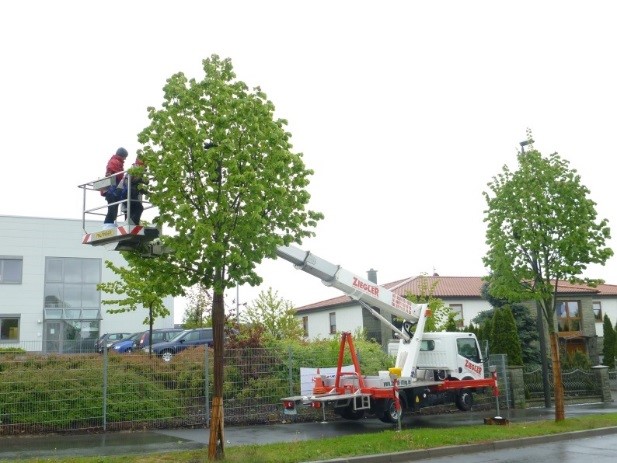Background and Objectives
The extreme conditions of urban street trees at inner city sites will be intensified by climate change. Typical native urban tree species such as lime and maple will soon reach the limits of their resilience, they increasingly suffer under drought stress and are more susceptible to pests and diseases. Nevertheless, even in times of climate change, especially associations for ecological conservation still demand the use of native tree species for the design of urban green areas.
Non-resident species, they argue, are "ecological desserts" and provide tremendously less faunistic biodiversity than native tree species. Appropriate comparative studies about the biodiversity at native and non-resident tree species growing at urban street sites to support this thesis by facts are not available to the best of our knowledge.
In the focus of this preliminary study is a comparison of the diversity of insects and arachnids (arthropods) at three native and close related non-resident urban tree species respectively.
Objectives and Aims
The following objectives were analysed within the project:
- In view of climate change, are selected non-native urban tree species better suited than native urban tree species for climate adaptation in cities due to their higher vitality and the preservation of a diverse tree crown communities?
- Is there a difference in the species communities of insects and arachnids if native urban tree species are compared with genius-like non-native tree species?
- How can native urban tree species be evaluated in comparison with non-native tree species if it is an aim to preserve and foster a species diverse urban fauna?
- Are there differences in vulnerability towards pests and diseases between native and non-native urban tree species?
Methods
This preliminary study is based on a screening of the species diversity of insects and arachnids on non-resident and native urban trees.
The scientific studies were conducted within the framework of a master's thesis in biology at the Department of Animal Ecology and Tropical Biology of the University of Wuerzburg over an entire vegetation period on the urban street trees of the climate change project "Urban Green 2021" (funded by StMELF) in Wuerzburg.
The following tree species of similar size were compared based on their arthropod diversity:
- European hornbeam (Carpinus betulus 'Frans Fotaine') - Hop hornbeam (Ostrya carpinifolia)
- European ash (Fraxinus excelsior 'Westhofs Glorie') - Flowering ash (Fraxinus ornus)
- Small-leaved lime (Tilia cordata 'Greenspire') - Silver lime (Tilia tomentosa 'Brabant')
All tree species are in the immediate vicinity in the same quarter "Industrial Area-East" in Wuerzburg. This ensures comparability of biodiversity between tree species.
To make statistic analyses possible, five trees per species were selected. The research was conducted from April to October 2017 in two-week intervals. To illustrate the entire species diversity, different catch methods were applied:
- Insect trap for flying insects (air eclector)
- Yellow Sticky Traps for small flying insects, in particular parasitoids
- Beating sheet for insect larvae and predatory spiders
Per tree 2 eclectors and 1 yellow sticky trap in the middle of the crown were positioned and three branches beat. For the crown area of the trees a cherry picker was used.
Afterwards the catches were sorted by animal group in the lab. Selected taxa were send to taxonomy experts for further classification. The yellow sticky traps were photographed in a standardized way and the digital images evaluated quantitatively with photo-analysis software.

